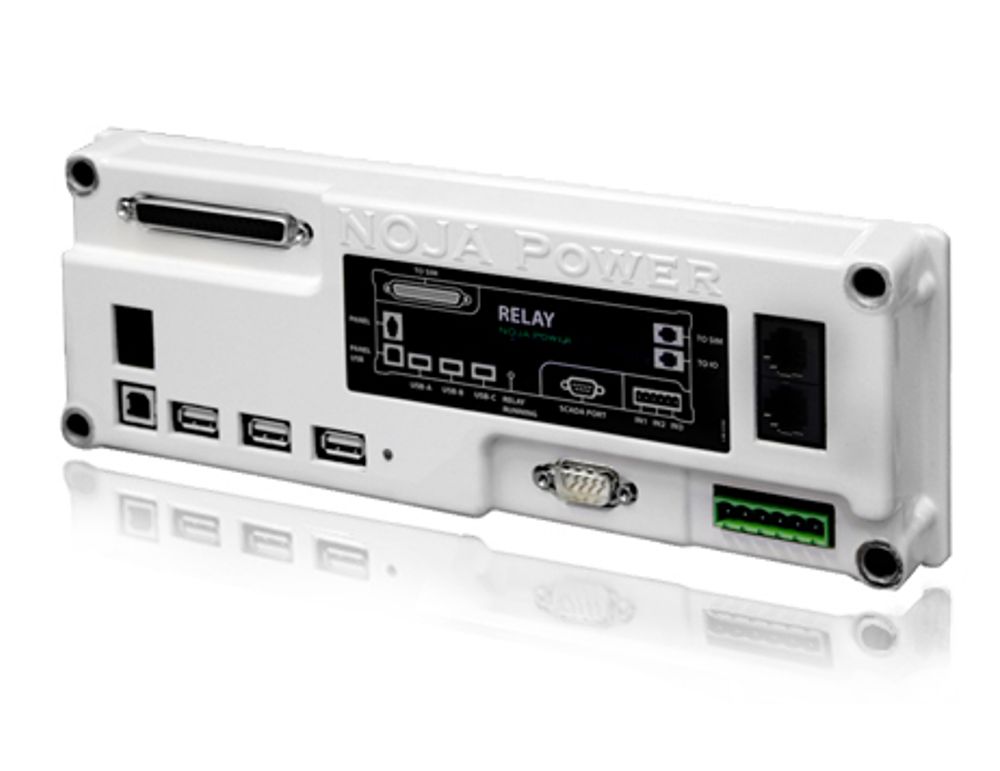Press Release
Published 02/2013
NOJA Power OSM38 Recloser Links Melbourne Water’s Plant to the Grid
IEC 61850 is established as the standard for automated electrical substation communication. Now leading automatic circuit recloser manufacturer NOJA Power endorses widening application of the standard to Fault Protection, Isolation and Restoration equipment to realise the full potential of smart grids.

Electrical switchgear engineers NOJA Power today announces its support for the adoption of IEC 61850 for Fault Protection, Isolation and Restoration (FPIR) equipment. NOJA Power says the use of IEC 61850 would significantly enhance coordination between Automatic Circuit Reclosers (ACR)––pole- or ground-mounted electricity distribution network protection devices––allowing such equipment to form an essential element of smart grids.
IEC 61850 was originally designed for automated electrical substations and built on earlier protocols including Manufacturing Message Specification (MMS) and Generic Object Oriented Substation Event (GOOSE) from Utility Communication Architecture (UCA) 2.0. Now, the International Electrotechnical Commission (IEC) and the European- and North American-equipment manufacturers who helped to develop the standard are promoting IEC 61850 as the basis for communication and control of Intelligent Electronic Devices (IED) and Distribution Automation (DA) beyond the substation.
As leading manufacturer of ACRs, NOJA Power supports this initiative because the company believes it will accelerate the implementation of smart grids in developed- and developing-economies.
The majority of modern electricity distribution and transmission infrastructure is operated using one of a small number of standard protocols, but these lack the abstract data models that allow IEC 61850 to rapidly exchange data yet preserve the original meaning of the information. IEC 61850’s retention of original meaning is important for allowing automated equipment to receive, acknowledge and, critically, act on the information. This benefit, plus the interoperability between equipment from different manufacturers that widespread adoption of a IEC 61850 would bestow, is critical in the realisation of smart grids – computerised, bidirectional electricity delivery systems that monitor, protect, and automatically optimise the operation of their interconnected elements.
“IEC 61850 is the result of amalgamating three different types of communication and is a fundamental shift in a much bigger way than most engineers imagine,” explained Andrew West, a SCADA communications expert and consultant.
“The coordination of data is a huge challenge in the implementation of smart grids. Contemporary grids are complex ‘system-of-systems’ that have evolved over many years and adhere to many different standards,” continued West. “But for the smart grid to work, these systems will have to cooperate. Because IEC 61850 is recognized as a pivotal standard for the integration of smart grid data it will play a major role in facilitating this cooperation.”
NOJA Power's OSM range of medium-voltage (15, 27 and 38 kV) ACRs currently supports SCADA communication between the devices and control centres using the IEEE 1815 (DNP3) and IEC 60870-5-101/-104 protocols over serial- or Ethernet-communication channels. In addition, NOJA Power supports direct communication between ACRs for automation coordination using a proprietary protocol. In future models, the Ethernet networking infrastructure that is already supported in the OSM range controllers could be used for IEC 61850.
“ACRs will form a critical part of smart grids and IEC 61850 is rapidly gaining unstoppable momentum as the preferred communication and control standard for the smart infrastructure of the future,” said Neil O’Sullivan, CEO, NOJA Power.
“It’s therefore vital that NOJA Power’s ACRs communicate using IEC 61850 protocols to enable them to be seamlessly integrated into future intelligent electricity transmission networks. To meet that requirement the company is in the latter stages of developing IEC 61850 compliant commercial products for release later in 2013.”
“Our continued investment in research and development to create quality products recognised as leading-edge technology in the world today underpins our business success,” he said.
About IEC 61850
IEC 61850 brings together many international standards into one designed to streamline communication in automated electrical substations. The standard was developed and maintained under the auspices of the International Electrotechnical Commission (IEC) and is part of IEC’s Technical Committee 57’s architecture for electrical power systems. IEC, electrical equipment manufacturers and electrical utilities developed the standard in a collaborative effort dating back to work begun by the North American Electric Power Research Institute (EPRI) in 1988.
IEC 61850 builds on earlier protocols including Manufacturing Message Specification (MMS) and Generic Object Oriented Substation Event (GOOSE). MMS provides the supervisory and control functions that allow devices to record data and then report that data to other equipment while GOOSE is a process coordination function used for high-speed sharing of information. GOOSE allows for the indeterminancy of Ethernet networking and protects the integrity of data. Any format of data (status, value) is grouped into a data set and transmitted within a time period of four milliseconds. IEC 61850 also defines a Sampled Measured Value protocol for digitising and transmitting power system voltages and currents for use by protection devices and measurement of power quality.
The standard is now being extended beyond the automated electrical substation to the Intelligent Electronic Devices (IED) and Distribution Automation (DA) used for electricity transmission and distribution. This extension of IEC 61850 promises to vastly increase communication between, and coordination of, electrical transmission and distribution infrastructure – a vital requirement for the implementation of a smart grid.
Want to stay up to date with Electrical Distribution Technology?
Join our list for a free weekly technical bulletin, as we share our Global Electrical Engineering experience directly to your inbox.
Subscribe →